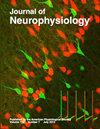量化疼痛和躯体感觉知觉的强度和相似性的统一措施。
IF 2.1
3区 医学
Q3 NEUROSCIENCES
引用次数: 0
摘要
在躯体感觉和疼痛的文献中,存在几种方法来描述感知感觉的位置和程度,并量化这些感觉地图的差异。然而,这些体感强度和相似性的测量可能会给出非独特的结果,这给文献综述和跨不同方法的荟萃分析带来了挑战。在本文中,我们提出了新的和统一的措施来量化疼痛图和体感知觉的相似性和强度。这些测量是可推广的,可以应用于任何体感图的应用,并且可以在2D和3D表示中使用离散和徒手绘图。体感知觉强度(SPI)的灵感来自Piper's Law,该定律描述了不完全空间求和现象,其中疼痛区域的变化不会产生感知强度的线性比例变化。体感知觉偏差(SPD)来源于最优运输理论,该理论量化了两种概率分布或体感图之间的差异。给出了这两种度量的数学推导。这些措施的效用是通过两项研究的数据来证明的——一项研究描述了诱发的体感知觉,另一项研究了神经性疼痛图。提议的测量与验证研究非常一致,说明了它们在研究和荟萃分析中作为表征体感知觉的不可知论测量的潜力。最终,我们的工作为感知和疼痛领域的使用提供了强大的统一措施,并可能有助于改善医疗保健中的疼痛特征,从而更好地了解疼痛患者的需求和进展。本文章由计算机程序翻译,如有差异,请以英文原文为准。
Unified measures quantifying intensity and similarity of pain and somatosensory percepts.
求助全文
通过发布文献求助,成功后即可免费获取论文全文。
去求助
来源期刊

Journal of neurophysiology
医学-神经科学
CiteScore
4.80
自引率
8.00%
发文量
255
审稿时长
2-3 weeks
期刊介绍:
The Journal of Neurophysiology publishes original articles on the function of the nervous system. All levels of function are included, from the membrane and cell to systems and behavior. Experimental approaches include molecular neurobiology, cell culture and slice preparations, membrane physiology, developmental neurobiology, functional neuroanatomy, neurochemistry, neuropharmacology, systems electrophysiology, imaging and mapping techniques, and behavioral analysis. Experimental preparations may be invertebrate or vertebrate species, including humans. Theoretical studies are acceptable if they are tied closely to the interpretation of experimental data and elucidate principles of broad interest.
 求助内容:
求助内容: 应助结果提醒方式:
应助结果提醒方式:


